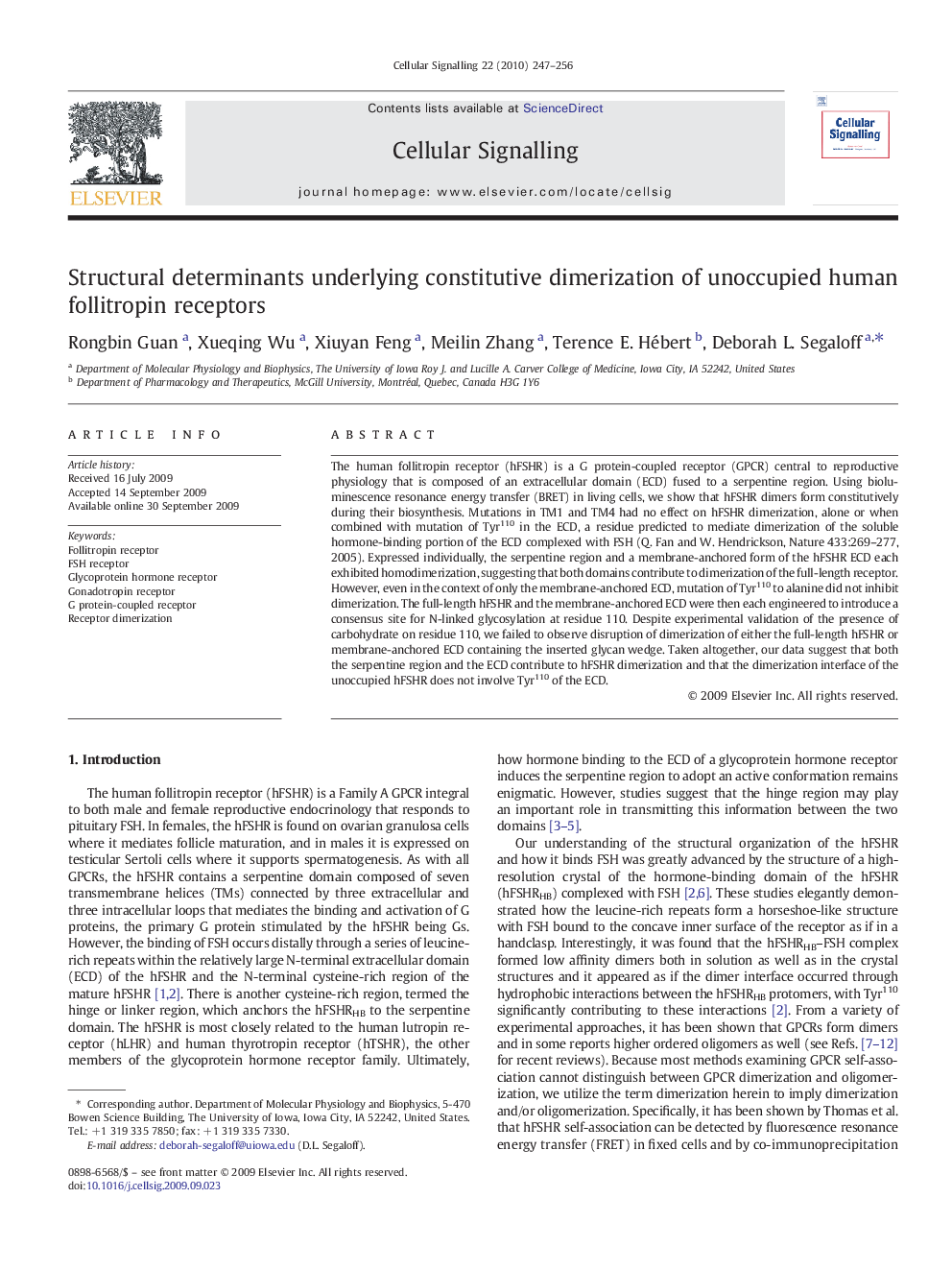| کد مقاله | کد نشریه | سال انتشار | مقاله انگلیسی | نسخه تمام متن |
|---|---|---|---|---|
| 10815841 | 1058506 | 2010 | 10 صفحه PDF | دانلود رایگان |
عنوان انگلیسی مقاله ISI
Structural determinants underlying constitutive dimerization of unoccupied human follitropin receptors
دانلود مقاله + سفارش ترجمه
دانلود مقاله ISI انگلیسی
رایگان برای ایرانیان
کلمات کلیدی
موضوعات مرتبط
علوم زیستی و بیوفناوری
بیوشیمی، ژنتیک و زیست شناسی مولکولی
زیست شیمی
پیش نمایش صفحه اول مقاله

چکیده انگلیسی
The human follitropin receptor (hFSHR) is a G protein-coupled receptor (GPCR) central to reproductive physiology that is composed of an extracellular domain (ECD) fused to a serpentine region. Using bioluminescence resonance energy transfer (BRET) in living cells, we show that hFSHR dimers form constitutively during their biosynthesis. Mutations in TM1 and TM4 had no effect on hFSHR dimerization, alone or when combined with mutation of Tyr110 in the ECD, a residue predicted to mediate dimerization of the soluble hormone-binding portion of the ECD complexed with FSH (Q. Fan and W. Hendrickson, Nature 433:269-277, 2005). Expressed individually, the serpentine region and a membrane-anchored form of the hFSHR ECD each exhibited homodimerization, suggesting that both domains contribute to dimerization of the full-length receptor. However, even in the context of only the membrane-anchored ECD, mutation of Tyr110 to alanine did not inhibit dimerization. The full-length hFSHR and the membrane-anchored ECD were then each engineered to introduce a consensus site for N-linked glycosylation at residue 110. Despite experimental validation of the presence of carbohydrate on residue 110, we failed to observe disruption of dimerization of either the full-length hFSHR or membrane-anchored ECD containing the inserted glycan wedge. Taken altogether, our data suggest that both the serpentine region and the ECD contribute to hFSHR dimerization and that the dimerization interface of the unoccupied hFSHR does not involve Tyr110 of the ECD.
ناشر
Database: Elsevier - ScienceDirect (ساینس دایرکت)
Journal: Cellular Signalling - Volume 22, Issue 2, February 2010, Pages 247-256
Journal: Cellular Signalling - Volume 22, Issue 2, February 2010, Pages 247-256
نویسندگان
Rongbin Guan, Xueqing Wu, Xiuyan Feng, Meilin Zhang, Terence E. Hébert, Deborah L. Segaloff,